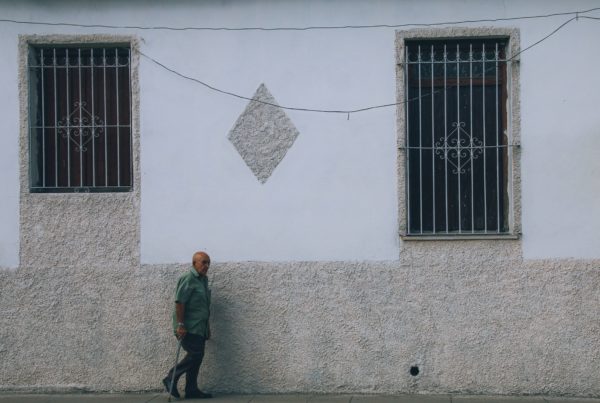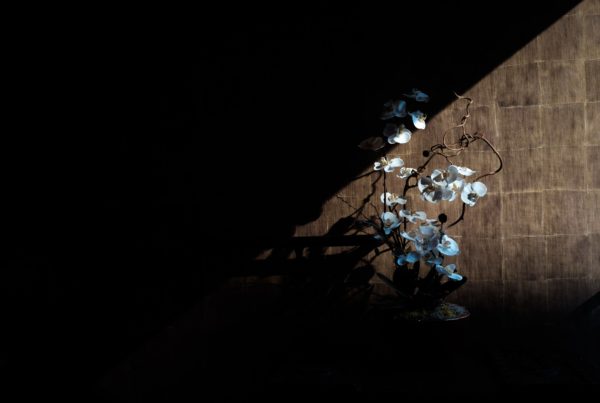Editor’s note: The following is a graduate school paper written in 2015 by Peter Watts, pastor of the R.O.C.K. Church in Los Angeles, California. With the author’s permission, it is lightly edited and republished here as a framework for thinking about lament and hip hop. Find more resources for biblical lament in our lament toolkit.
I was born in 1972 but grew up on ’80s hip hop music. I can still remember the first time I heard Sugar Hill Gang and the opening line to the song “Rapper’s Delight.” It says:
I said a hip-hop, the hippie the hippie
To the hip, hip hop you don’t stop
Rock it to the bang bang boogie
Say up jump the boogie to the rhythm of the boogie, the beat.
From that point, I fell in love with hip hop. In the meantime, I was attending a small black Baptist church in the city of Watts, California, where the 1965 riots happened. It was there I received Christ and was baptized. It was also in this small church where I was formed as a disciple of Christ with the purpose of engaging my community around justice and mercy. In this church, I found that the hymnals were centering but too much of my ignorance didn’t find them too exciting like I did the hip hop music I was listening to at home on my stereo player (I know I’m dating myself).
It was in 2009 when I pursued a degree in Theology at Fuller that I took a strong interest in the Old Testament and the topic of lament. I found that most of the psalms of David and the writings of Jeremiah in Lamentations reminded me of the songs I would hear in that old Baptist church in Watts where my grandfather was the deacon. It was something about the pain and suffering that I identified with in the Psalms that translated directly to the words that my old church sang each Sunday. Then there was also a connection to the hip hop culture I was a part of growing up where that same pain and suffering was coming through in the lyrics of these young black boys and girls in Los Angeles and Oakland that resonated with me too. That’s when I began to see a correlation to the pain being addressed in hip hop lyrics, was the same pain that was being addressed in the old negro spirituals, which was the same pain being expressed by the weeping prophet Jeremiah. This paper encompasses all of that experience. This is me making sense of my church formation as well as the context of hip hop culture that I’m familiar with. Let this paper be a lens into the pain and suffering as well as the hope we find in Christ even in our twenty-first century poets who write to break beats and drums machines.
A theology of lament through hip hop
Something is missing from the Western church. We do not have a complete picture of God from the Old and New Testament. We live in an era where the church celebrates “Christus Victor” but often times dismiss the “Suffering Savior.” In my paper, I would like to propose that we bring back a theology of lament in the church. This complete picture will help us understand who God is completely and how he comforts us even in our pain and suffering. I will also argue that in the African-American experience, the songs of lament have always been present and can be expressed today in the most unlikely places—hip hop music. I will use Tupac Shakur, a late hip hop artist who used his music to express the pain and suffering that he was experiencing as an African-American male. In his music, we find hope in suffering just as we do from the biblical witnesses of Lamentations and the Psalms.
Great art, great music, and great literature can emerge out of pain (Wright). There is a present danger of losing the practice of lament in the church. The songs of lament in the Old Testament come out of the suffering from violence on God’s people. The biblical laments give us a better understanding for the suffering present in contemporary hip hop music. The lament poetry tells us about a God who is all-loving and good. When we begin to discount the sufferer, they become unheard, nameless, and forgotten. I believe that certain expressions of hip hop music can be categorized as lament in the modern urban context. These cries help us to empathize with the plight of the African-American community who continue to experience God’s faithfulness while enduring violence.
Setting the stage
The Babylonians conquer Jerusalem and the people experience destruction. Nebuchadnezzar’s leadership resulted in a small exiled community wondering about the Davidic monarchy, the city of Zion and the temple where an omnipotent God would dwell (Wright 2006). It is in this context that we see the book of Lamentations being written with such beauty but at the same time soaked in tears. The author is unknown, although scholars have attributed it to the prophet Jeremiah. The author of this book who I will refer to as “the Poet” creates a masterpiece that points to the redemptive person made in the image of God.
The book of Lamentations is written as an acrostic. The interesting part of this book is that we hear different voices, but the one voice we don’t hear is the the voice of God. It’s as if God is silent during the suffering of his people. Right in the center of the book, in chapter 3, we a find a renewed sense of hope in suffering. The Poet, like modern day poets of hip hop, takes the pain that is experienced in his community to create a beautiful picture of God’s grace.
Lamentations gives voice to the voiceless victims of violence during that Babylonian invasion. Likewise, hip hop music gives voice to urban youth who experience violence, death, and pain from the many atrocities that are self-afflicted or placed upon them. One voice in particular is Tupac Shakur. His music is considered classic poetry that expresses the depths of human suffering and pain. His life is even categorized as one who lived a life of pain. Out of the pain he experienced comes this beautiful poetry that has endured for decades. Lamentations forces us to listen to every mood that the deepest suffering causes, whether we approve or not. We are called not judge but to witness. Not to speak but to listen (Wright).
Hip hop music in its rawest form is very hard for the novice listener to stomach. The misogynistic lyrics along with the profanity make it very difficult to hear the underlining message being proclaimed. Lamentations’ Poet cries out to God as a result of the oppression of his people. In the same manner, an artist’s work like Tupac Shakur does the same. We are not to judge and criticize before we listen to the deepest suffering being expressed in the music.
What happened to lament in the church?
Most stories of grief and pain come as the result of a personal experience that sent the author on a quest for answers (Pemberton). Not many write about grief and pain unless they have been captured by it. Our response to storms in our lives, rather literal or metaphoric, reveals much about us. In our Western culture, we don’t like to spend much time in lamenting. I would argue that the American church has lost the theology of lament. Dr. Soong Chan Rah in his book The Prophetic Lament says, “the American church avoids lament. The theological and ministerial power of lament is minimized, and the underlying narrative of suffering that requires lament is lost. Absence doesn’t make the heart grow fonder, absence makes the heart forget” (Rah). We have forgotten that the Old Testament is filled with violence, pain and suffering. The people of God experience much violence. There are wars, land removal, conquests, and invasions. These events have produced much of the laments we hear and see in the books of Job, Lamentations as well as the Psalms.
The African American experience and lament
There is a gift that the African American church has for the body of Christ at large. Our theology of lament. It is through the African American experience throughout the years that we learn much about hope in suffering. The voice of an exiled people through 400 years of slavery gives us insight into the biblical context of lamentations. Out of these experiences of slavery and Jim Crow laws comes these songs of hope. Through music, an emotional connection can occur on a Sunday morning between the soloist and those in the congregation over what God has brought or is bringing them through: shared experiences of hope, pain, injustice and restoration (Smith and Jackson 2005). The artist/poet’s reflection on his or her life creates and shapes a perspective on life that others can and do identify with.
When you delve into the history of any people group, you cannot separate the shared experienced from what people sing or write about. The very first spirituals were created by slaves who were not professionals. These men and women experienced the harshness of a corrupt system and theology of Christianity. They would express their soul’s desire for a future liberation while living in current chains and oppression. Slaves owned by Christians in Colonial North America were forbidden to practice any religion but Christianity. In fact, church service attendance was compulsory for many slaves. The language of the owner was the only language permitted, whether in the fields or in church meetings. As Africans were exposed to stories from the Bible, they began to see parallels to their own experiences. In the story of the exile of the Jews and their captivity in Babylon, for example, they saw a mirror of their own captivity. The verse-and-refrain form as well as the themes of the Bible-story lyrics of many hymns fit well with the musical traditions of African American slaves and were easily adapted to serve their purposes. Words or whole verses were added as a means to educate, communicate news or gossip, comfort mind and body, reprimand, tell a story, or give a coded signal. Consider the spiritual “Motherless Child”:
Sometimes I feel like a motherless child
Sometimes I feel like a motherless child
Sometimes I feel like a motherless child
Long way from my home
Sometimes I wish I could fly
Like a bird up in the sky
Oh, sometimes I wish I could fly
Fly like a bird up in the sky
Sometimes I wish I could fly
Like a bird up in the sky
Closer to my home
Motherless children have a hard time
Motherless children have-a such a hard time
Motherless children have such a really hard time
A long way from home
Sometimes I feel like freedom is near
Sometimes I feel like freedom is here
Sometimes I feel like freedom is so near
But we’re so far from home
The African American church has always had this tradition as part of its life in the church. It would do well for the larger evangelical church to embrace it as part of its liturgy and theology as well.
Are God and hip hop violent?
A careful observation of lament in the church will keep that practice alive. As a result, when we see pain and suffering of others, we will not so easily dismiss it and not be affected by it. Violence in the Old Testament is commonly debated. Two scholars in particular, Eric Seibert and W. Derek Suderman, fall on the opposite ends of the spectrum when it comes to the depictions of the violent images of God. Suderman concludes that the images of God that depict him as violent continue to function as hermeneutical irritants that provide the means for emerging with the Word of God for our time and place, especially when it challenges our contemporary understandings or make us very uncomfortable (Suderman 2011).
The Bible depicts God as a non-violent creator and as one who wrestles with evil in the beginning. There is a creative tension in the biblical witnesses that tell us about God. We cannot remove the narratives of violence in the Old and New Testaments and their portrayal of God. We look to the Scriptures to see the revelation that God wants to reveal to us today. We cannot avoid those stories of conquest and suffering. Violence is real in the ancient text, is both historically accurate and metaphorically true. We live in between those two tensions to find the God who cares as well as the God who judges. Our interpretations are not based on the historical accuracy but rather on the theological implications for us today. If we move from historical reference to Scriptural witness as our central paradigm for interpretation, even “fictional” accounts such as Jonah or Jesus’s parables provide crucial witnesses to God’s revelation and character (Suderman).
Certain genres of hip hop music can be very violent. Lyrics that speak of shooting, murder, and death can be off-putting. We cannot avoid those stories of suffering just like we can’t avoid them in Scripture. The real question that is asked is based around the accuracy of the song. Many artists such as Tupac provide images of a “ghetto” where violence is persistent in certain neighborhoods. From a distance, you would think that these communities were no less violence than countries like Iraq. The reality is that a lot of the music is not historically accurate but are metaphors to speak to a greater truth. This truth could be based around the feelings of abandonment from a father who promised that he would be there in times of suffering. These images are created based on current realities of inner city oppression and occupation of injustice systems. Just as Suderman argues against Seibert’s historical accuracy, I argue that we listen to the lament to hear the revelation that God wants us to get.
The people of exile’s response to pain
From the debris of destruction, we hear the many voices of poets and prophets crying out on behalf of their community. Voices likes Ezekiel and Jeremiah are just two examples. These two voices demonstrate the expression and reaction to trauma experienced after exile. All biblical books are products of community of transmission, and the communities of the books of Ezekiel and Lamentations are clearly communities that are struggling with crises, personal and social, that include dealing with suddenly mobile identities and transitional culture and theology (Smith-Christopher). When we read these texts with an eye to study hip hop culture, just as we would with refugee culture, these observations become a big deal. Consider reading these two books from the perspective of an inner city youth in an urban poor context. The resources are minimal, housing in the neighborhood is transitional, and the political and social politics of the city are unjust. Now imagine consistent trauma in the form of gang violence, police brutality, lack of jobs in the neighborhood, and a sense of powerlessness against the system.
This can describe the context of the book of Lamentations and even the prophet Ezekiel. This also describes urban America today. Out of that negativity comes hip hop culture and music. The music draws from the pain of the community. Most artists express their frustrations and disappointments through poetry. They put these poetic forms against the melodic beats and rhythms. The result is a genre that begins to speak to the community in new ways. Take for example Tupac’s song “Shed So Many Tears.” This song comes out of Tupac’s anguish, crying out to God wondering if he still cares for him. It would be easy to dismiss his artistry as just another profane latent rap song. Reading it again from a different perspective, you begin to see he is wrestling with the suffering of the world, with death, and with God. He has an expression of anguish much like the Poet in Lamentations. In the prelude of his rap, he prays a rendition of the psalm, “Though I walk through the valley of the shadow of death, I will fear no man but God.” Then he continues:
Back in elementary, I thrived on misery
Left me alone I grew up amongst a dying breed
Inside my mind couldn’t find rest
Until I got that Thug Life tatted on my chest
Tell me can you feel me? I’m not livin in the past, you wanna last
Be tha first to blast, remember Kato
No longer with us he’s deceased
Call on the sirens, seen him murdered in the streets
Now rest in peace
Is there heaven for a G? Remember me
So many homies in the cemetery, shed so many tears
Ahh suffered through the years and shed so many tears
Lord, I lost so many peers shed so many tears
To both academic and popular audiences alike, arguably no one is more theologically compelling than Tupac Shakur. In addition to releasing an incredible seven posthumous albums and selling more units dead than he did alive, Tupac’s theological reputation within academia has only grown in the years since his death. Anthony Pinn reflects upon the way in which “Tupac Shakur and his fans theologically link him to a larger Christian discussion of the Christ figure and eschatology,” while ultimately locating Tupac within the centuries-old tradition of black humanism. Eric Dyson, on the more popular level, devotes an entire monograph to the “search” for Tupac, a significant portion of which explains and establishes Tupac’s status as a “ghetto saint” and prophet (Grimes). Tupac’s theology is a thug theology, one that is unconventional and rebellious. It is a theology with an existential battle between the forces of evil and suffering in this world. Tupac’s music illuminates the black American as crucified and exiled people. His music is the expression of a people who cry out to God in hopes of getting a response to relieve them from such pain.
Lamentations to Deuteronomy to American ghetto
Much has been said about the curses and blessings written in Deuteronomy. This covenant that was given to Abraham and its conditions are played in the life of Israel. In the first chapter of Lamentations, we hear the Poet speak of the city that is in anguish and despair. Then, for the first time, we see a connection to the reasoning behind why they were overtaken by the Babylonian Empire. It was a result of the Israelites’ disobedience to the covenant. This curse is in direct relation to Deuteronomy 28. Basically, Deuteronomy 28 affirms that if the people obeyed, they would be blessed by God and prosper (Deut. 28:1-14), and if they disobeyed, they would be cursed and suffer (Deut. 28:15-68). The connection is evident in Lamentations 1:5:
Her foes have become her masters;
her enemies are at ease.
The LORD has brought her grief
because of her many sins.
Her children have gone into exile,
captive before the foe.
Christopher-Smith makes this same observation in his work. By far, the majority view of Deuteronomy 28, however, is that these descriptions of suffering are among the curses that Israel is threatened with if they choose to disobey the laws that have immediately preceded them, and that these curses take the expected form of traditional curses that follow the literary pattern of an international treaty in the ancient Near East. It is precisely these curses that are often compared to the descriptions of suffering in the book of Lamentations.
Tupac, the modern day prophet, spoke of this same feeling of being cursed for the sins of the people. He wrestles with his own “thug theology,” trying to find a reason for his present situation. His frustration leads him to question the possibly of being rescued from this life of sin. He even concedes that he will die and go to hell because of his exiled life. He then cries out to God, hoping that he hears him and can identify with his pain.
Now that I’m struggling in this business, by any means
Label me greedy getting green, but seldom seen
And f*** the world cause I’m cursed, I’m havin visions
Of leavin here in a hearse, God can you feel me?
Take me away from all the pressure, and all the pain
Show me some happiness again, I’m going blind
I spend my time in this cell, ain’t living well
I know my destiny is Hell, where did I fail?
My life is in denial, and when I die
Baptized in eternal fire I’ll shed so many tears
Concluding Thoughts
The North American church can learn much from the African-American experience. The African-American church can learn much from hip hop. It is our shared experiences where we find unity at the cross of Christ. He was the suffering savior who gave us hope in his resurrection. As violent the death of Jesus is, we still find beauty in the image of him in the crucifixion.
It was the contemporary artist Crystal Lewis who wrote these words in her song “Beauty of the Cross:”
The cross, stained by blood
The beauty of the cross
Healing for the lost
The cross, stained by blood
The beauty of the cross
Healing for the lost
The cross
Let us rethink how we read about the violence in Scripture in relation to texts like Lamentations and Psalms. When we consider the beauty of those words, we can also find beauty in the pain of hip hop lament. These modern day prophets and poets are crying out to God wondering if he will deliver them from all my transgressions. “Do not make me the scorn of the fool!” (Psalm 39:8).
References
Christopher, Daniel L. A Biblical Theology of Exile. Minneapolis: Fortress Press, 2002.
Dyson, Michael Eric. Holler If You Hear Me: Searching for Tupac Shakur. Basic Civitas Books, 2001.
Grimes, Katie. “But Do the Lord Care?: Tupac Shakur as a Theologian of a Crucified People.” Political Theology 15, no. 4 (2014): 326-52. Accessed December 1, 2015. DOI 10.1179/1462317X14Z.00000000082.
Hof, Eleanor. A Missiology of Lament. Swedish Missiological Themes, 2013.
Pemberton, Glenn. Hurting with God: Learning to Lament with the Psalms. Abilene, Texas: Abilene Christian University Press, 2012.
Rah, Soong-Chan. Prophetic Lament: A Call for Justice in Troubled Times. Downers Grove, Illinois: InterVarsity Press, 2015.
Suderman, Derek. Wrestling with Violent Depictions of God: A Response to Eric Seibert’s Disturbing Divine Behavior. Direction, 2011.
Wright, Christopher J.H. The Message of Lamentations. Downers Grove, Illinois: InterVarsity Press, 2015.

Dr. Peter Watts
Dr. Peter Watts Jr. was born and raised in South Los Angeles. Peter is currently the CEO and co-founder of the Watts of Power Foundation, where he leads a program called the Teacher Village to recruit and train more Black male teachers, with plans to also provide housing so they can live affordably in the neighborhoods where they teach. He is a graduate of Cal State Dominguez Hills, where he received his BA in Mass Communications. He received his Master's of Education in Administration and Leadership degree from University of Phoenix. He also holds Master's and Doctorate in Theology degrees from Fuller Theological Seminary. His ministry career began more than 20 years ago as preacher, teacher, and eventually church planter. In 2008, he and his wife planted the Rock Church in Los Angeles, where they pastor and lead. Dr. Watts has been bi-vocational his whole career as a public school teacher and charter school principal. He is married to his wife, Dr. Didi Watts, and has three adult children: Jasmin, Avery, and Imani. Dr. Watts also serves on the board for Teach For America, Los Angeles, and Innovate Public Schools.



